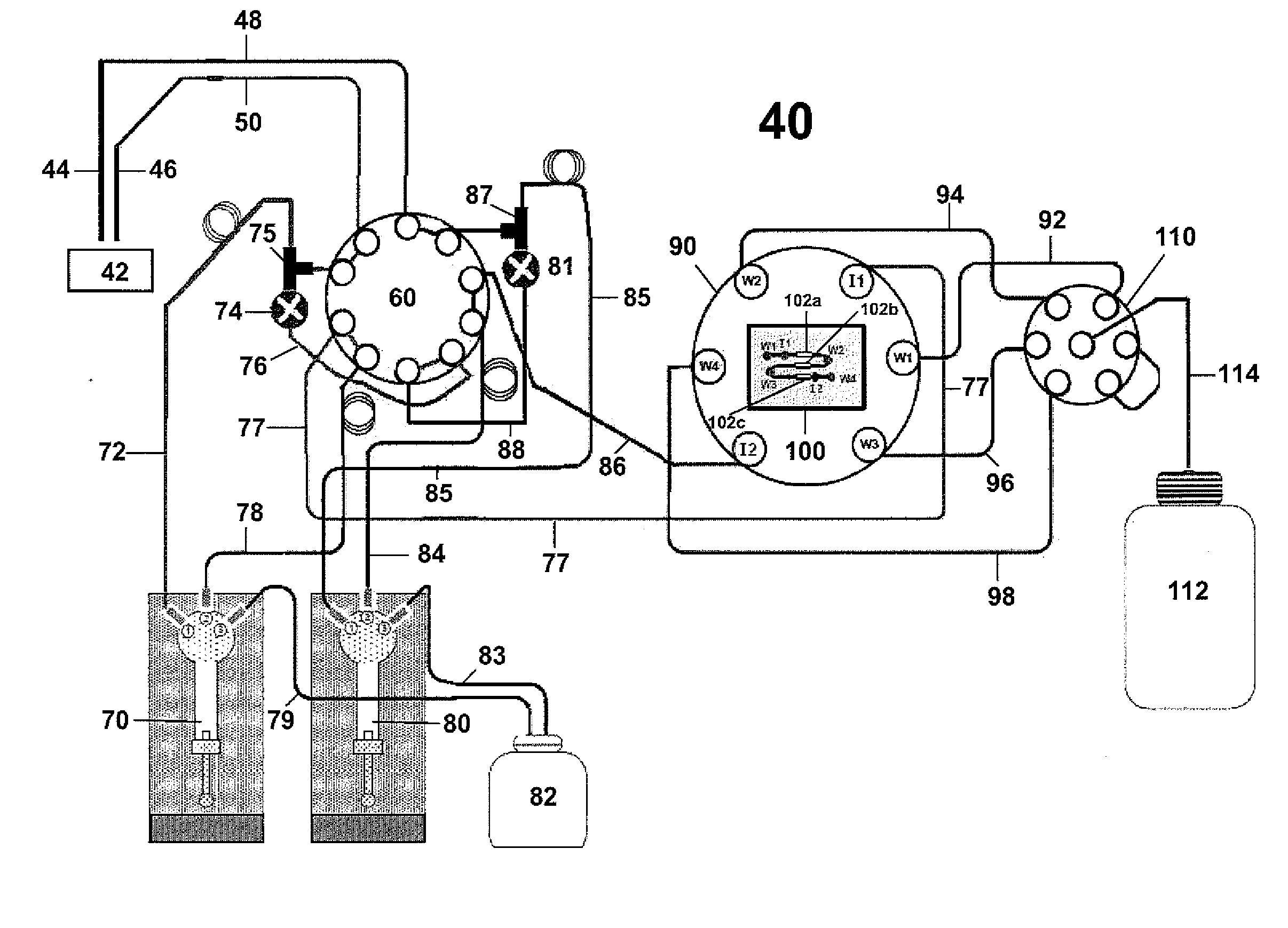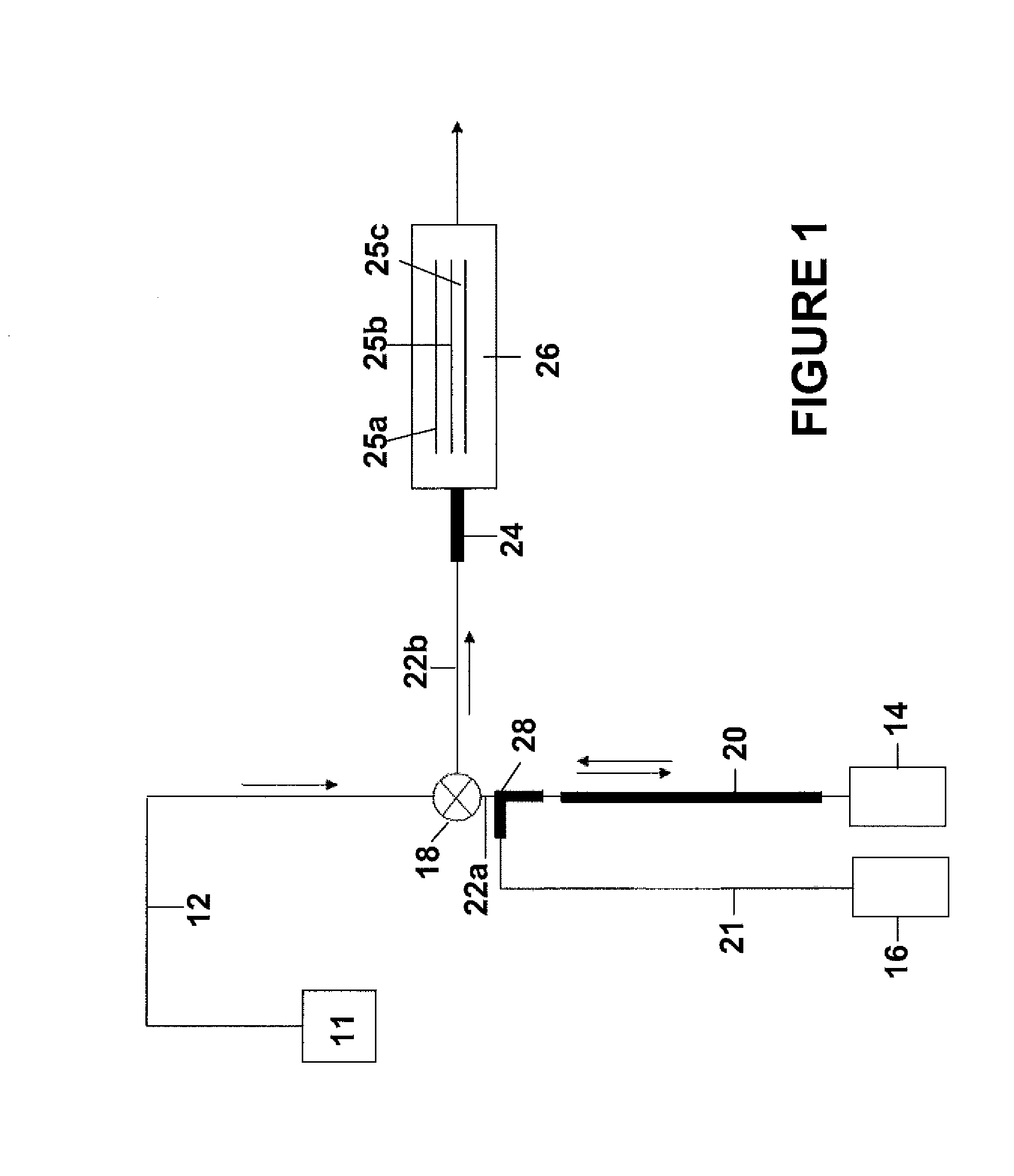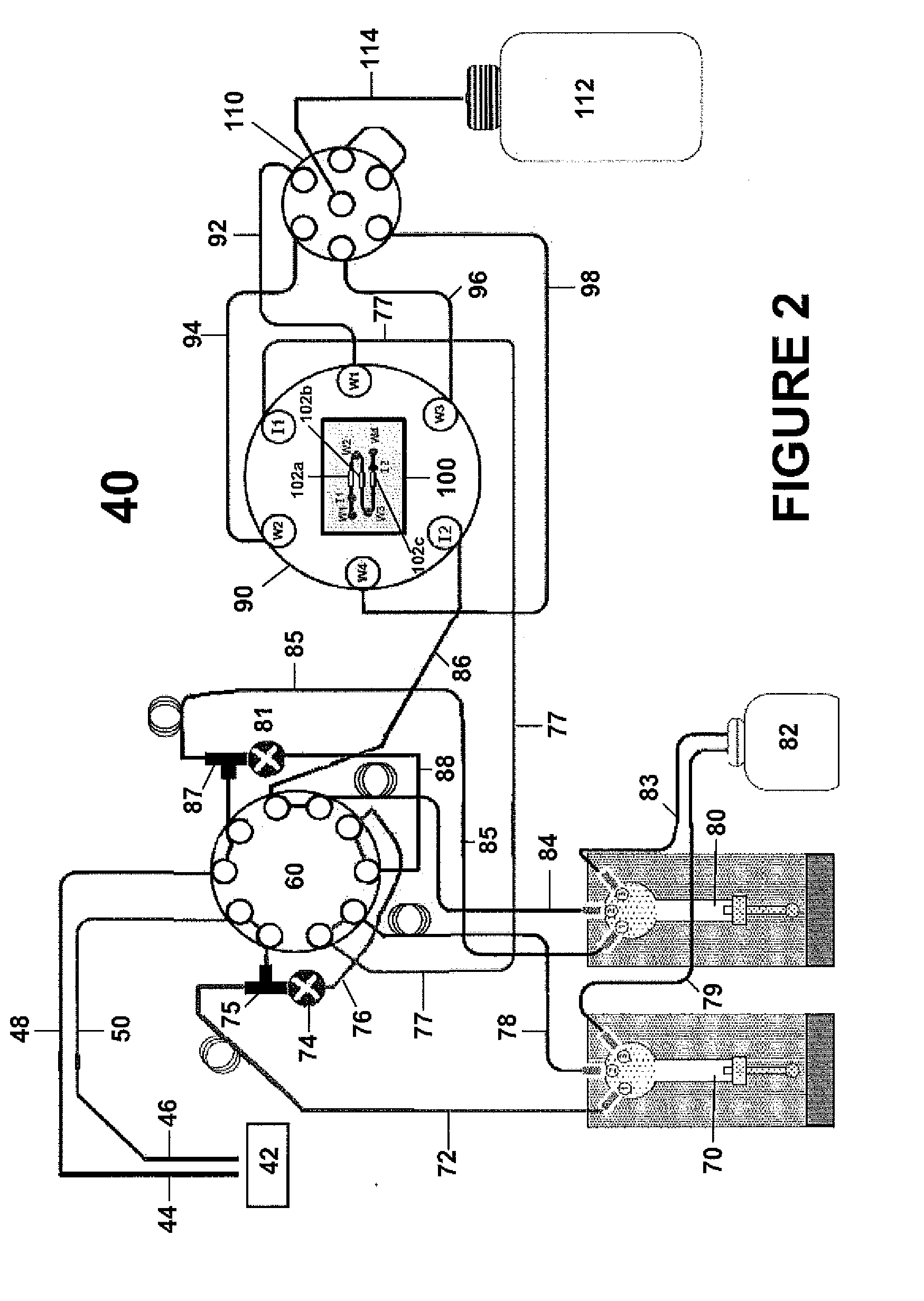In situ-dilution method and system for measuring molecular and chemical interactions
a molecular and chemical interaction, in situ technology, applied in the direction of instruments, transportation and packaging, laboratory glassware, etc., can solve the problems of insufficient human error, time-consuming, and insufficient accuracy of analyte concentration
- Summary
- Abstract
- Description
- Claims
- Application Information
AI Technical Summary
Benefits of technology
Problems solved by technology
Method used
Image
Examples
example 1
n of the In Situ Dilution Method for Determining Association and Dissociation Constants
[0070]In Example 1, the kinetic values for the interaction between carboxybeneze sulfonamide and immobilized carbonic anhydrase were determined using a standard multiple injection method and the in situ dilution method described herein. In the classical approach sequential injection method (FIGS. 4A-4D) a series of individual concentrations were prepared as a serial doubling dilution set starting from a neat concentration of 40 mM giving a total of nine different concentrations. These concentrations were made up in the running buffer (i.e HEPES buffer saline, pH 7.4). 50 mL of each sample was injected at 50 mL / min and allowed dissociate for 300 seconds. Each concentration was repeated in duplicate and the entire analysis was repeated at four different analysis temperatures (10 C, 20 C, 30 C, 40 C—FIGS. 4A-D, respectively). FIG. 5 shows this analysis repeated using the in-situ dilution method. In t...
example 2
Stepped (50 Steps) Increase in Analyte Concentrations Using the In-Situ Dilution Method
[0073]The sample in this case is water containing dimethylsulfoxide (DMSO) while the buffer pump was primed in water. The SPR based biosensor responds to the increase in refractive index as the concentration of DMSO increases. The sample pump flow rate and the buffer pump flow rate were incrementally adjusted inversely to each other while the volumetric flow rate through the flow cell was set as if to be held constant. The ideal step injection curve (linear) assuming no-air compliance and the recorded step injection bulk refractive index curve (non-linear) where a 20 μL air segment was placed within the sample injection line to cause delayed sample stream flow.
[0074]The injections described herein are preferably performed using liquid pumps with linear stepping action where the flow rate increases linearly with a linear increase in drive rate. This is the behavior expected from precision syringe p...
example 3
t of Dispersion on Kinetic Analysis
[0077]As stated earlier, dispersion can give rise to unpredictable analyte concentration profiles and any error in the analyte concentration will give rise to a corresponding error in the kinetic analysis. It is therefore desirable to use flow control and mixing techniques that do not rely on dispersion. In more detail, if an analyte is injected into a tube flowing under laminar flow conditions then it will tend to mix with the analyte free liquid already present in the tube. Assuming pressure driven flow, as the analyte segment travels along the tube it will become diluted due to the combined effect of molecular diffusion “smeared out” by the parabolic convective flow profile within the tube. This is used to great advantage to produce sigmoidal shaped analyte gradient injections (such as in WO 2004 / 109295 A1 and W02009 / 025680), but it is difficult to model the analyte concentration accurately when the dispersion volumes are low to intermediate as ...
PUM
| Property | Measurement | Unit |
|---|---|---|
| dead volume | aaaaa | aaaaa |
| volume | aaaaa | aaaaa |
| volume capacity | aaaaa | aaaaa |
Abstract
Description
Claims
Application Information
 Login to View More
Login to View More - R&D
- Intellectual Property
- Life Sciences
- Materials
- Tech Scout
- Unparalleled Data Quality
- Higher Quality Content
- 60% Fewer Hallucinations
Browse by: Latest US Patents, China's latest patents, Technical Efficacy Thesaurus, Application Domain, Technology Topic, Popular Technical Reports.
© 2025 PatSnap. All rights reserved.Legal|Privacy policy|Modern Slavery Act Transparency Statement|Sitemap|About US| Contact US: help@patsnap.com



